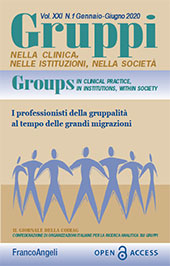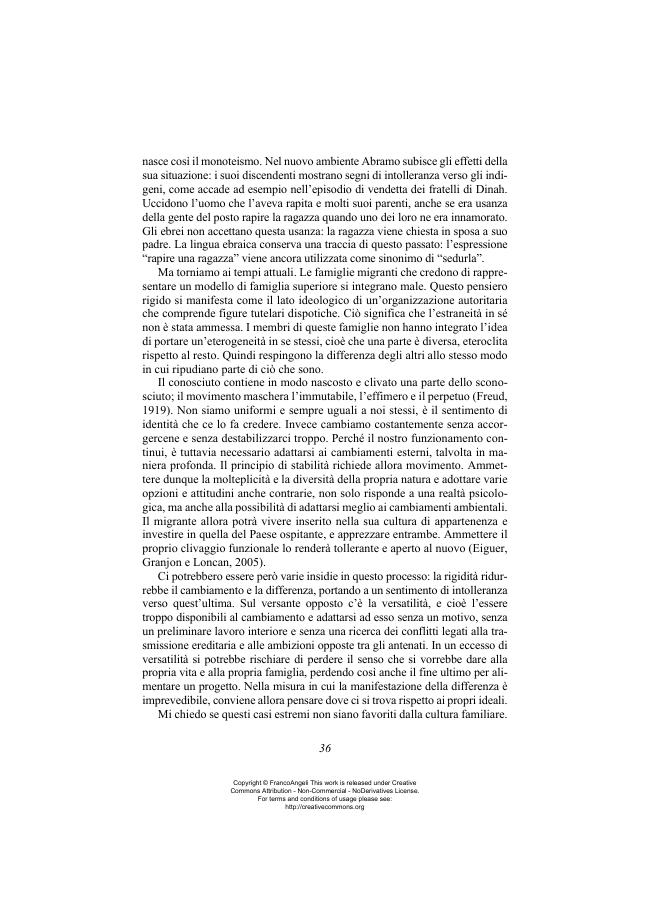Differenza culturale ed estraneità nella famiglia dei migranti
P. 31-40
I sentimenti di estraneità e di non familiarità sono connotati da disagio e sofferenza, persino da follia. Verranno analizzate tre forme di estraneità comprovata: 1) la sensazione di avere una parte estranea dentro di sé; 2) quello di essere uno straniero nella propria famiglia e 3) quello di essere una famiglia straniera in un Paese ospitante. Possiamo considerare che la cultura di riferimento abbia un'origine sociale: ognuno si riconosce come appartenente ad essa. Ma è la famiglia che pone le basi nell'individuo permettendo l'introiezione. Egli assume la sua unicità e la differenza tra le altre culture e la sua. Tuttavia, perché tra i migranti, alcuni sono più a loro agio rispetto ad altri nel Paese ospitante? Si tratta di quelli che sono in rottura con il loro senso di appartenenza alla famiglia? Nella migrazione, i membri della famiglia si vivono come estranei.
La loro integrazione nel nuovo ambiente dipenderà molto dalla questione di cosa significhi essere estraneo nella loro famiglia, se c'è la possibilità di ammettere la propria differenza: esistere, pensare e sognare diversamente. Mettere al lavoro, o addirittura addomesticare lo straniero in sé,l o straniero nella propria famiglia e lo straniero in un Paese ospitante, forse contribuisce all'adeguamento della famiglia. Un caso clinico supporta queste idee. [Testo dell'editore]
The feelings of foreignness, of unfamiliarity, of strangeness have connotations of unease and suffering, or even madness, one's own madness. The subject is frightened,when he realises he cannot recognise everyday things. He has doubts on hisability to think. Three types of feelings of foreignness shall be analysed: 1) The feelingof having something foreign inside oneself. 2) The feeling of being a stranger inone's own family and 3) The feeling of being a foreign family in a host country. Asfor cultural diversity, we can say that each person's cultural references come from asocial origin: the person identifies himself as belonging to it. But it's the family which paves the way and thus enables him to introject it. He then rises up to hissingularity and the differences between other cultures and his own. However, whythen, that amongst migrant, some feel more at ease in their host country than others?The very same people who are breaking with their feelings of belonging to a family?
With migration, family members lives as if strangers (of course, they are, but I amreferring to the person suffering). Their integration to their new environment willdepend a lot on wondering what it means to be a stranger in one's family. This includesthe possibility of acknowledging one's difference: another way of existing,thinking, and dreaming. Using, or even coaxing the stranger inside, the stranger inone's family and the foreigner in a host country, may contribute to the family's adaptation.A clinical case supports these ideas. [Publisher's text]
-
Articles from the same issue (available individually)
-
Information
DOI: 10.3280/gruoa1-2020oa10480
ISSN: 1972-4837
KEYWORDS
- Parte estranea, Famiglia migrante, Origine della diversità culturale
- Foreign parts, Migrant families, Origin of cultural diversity



